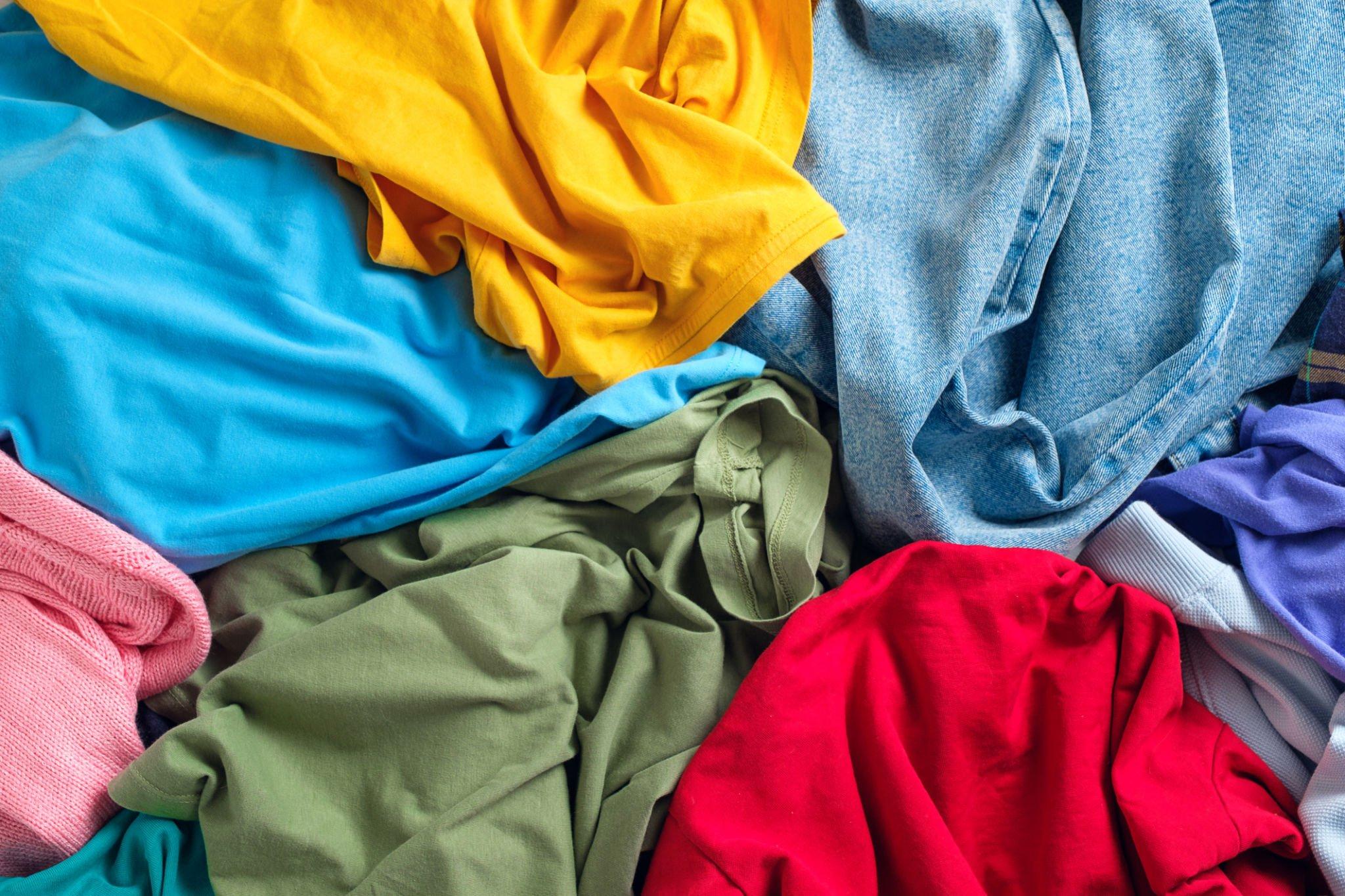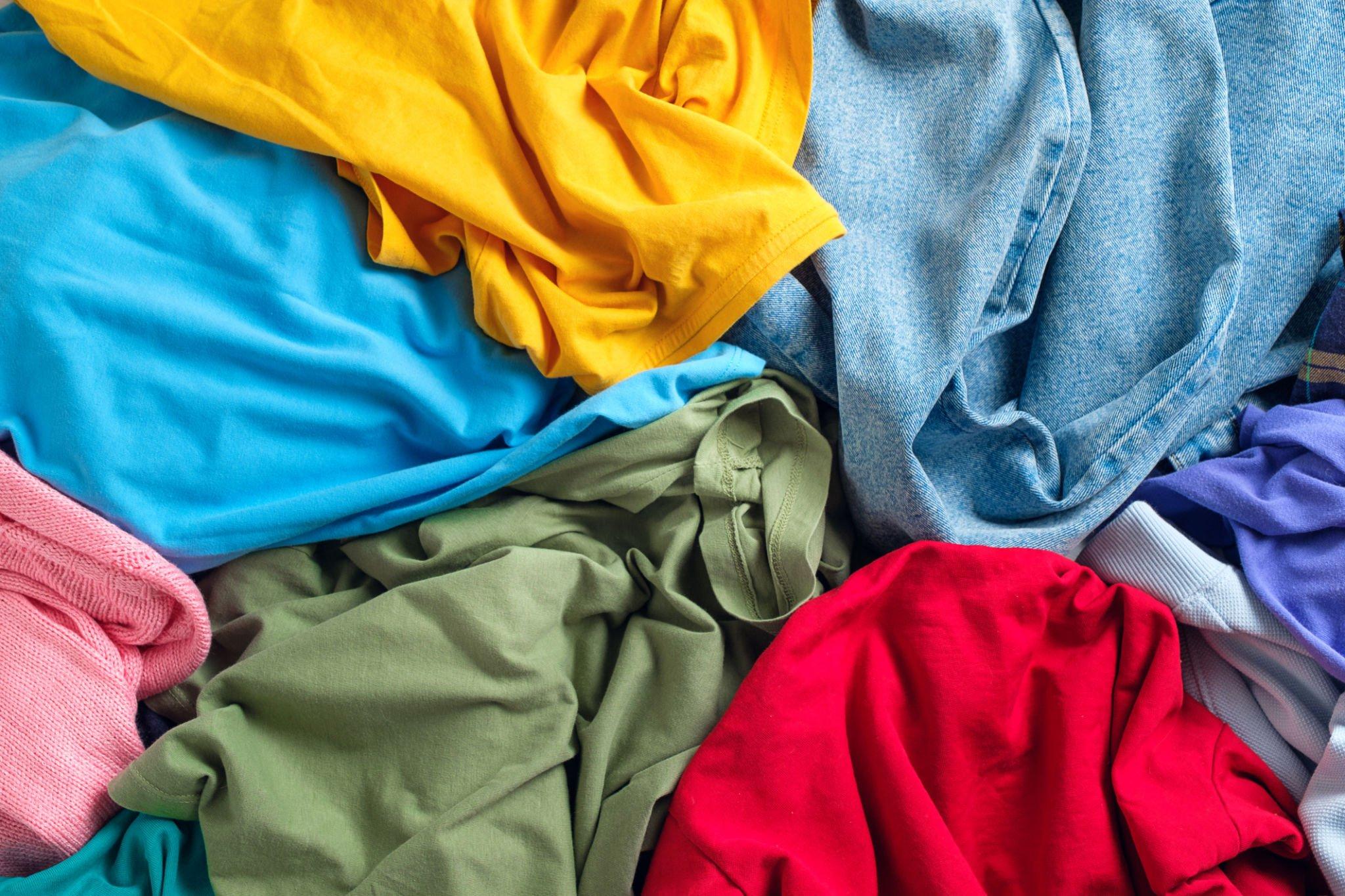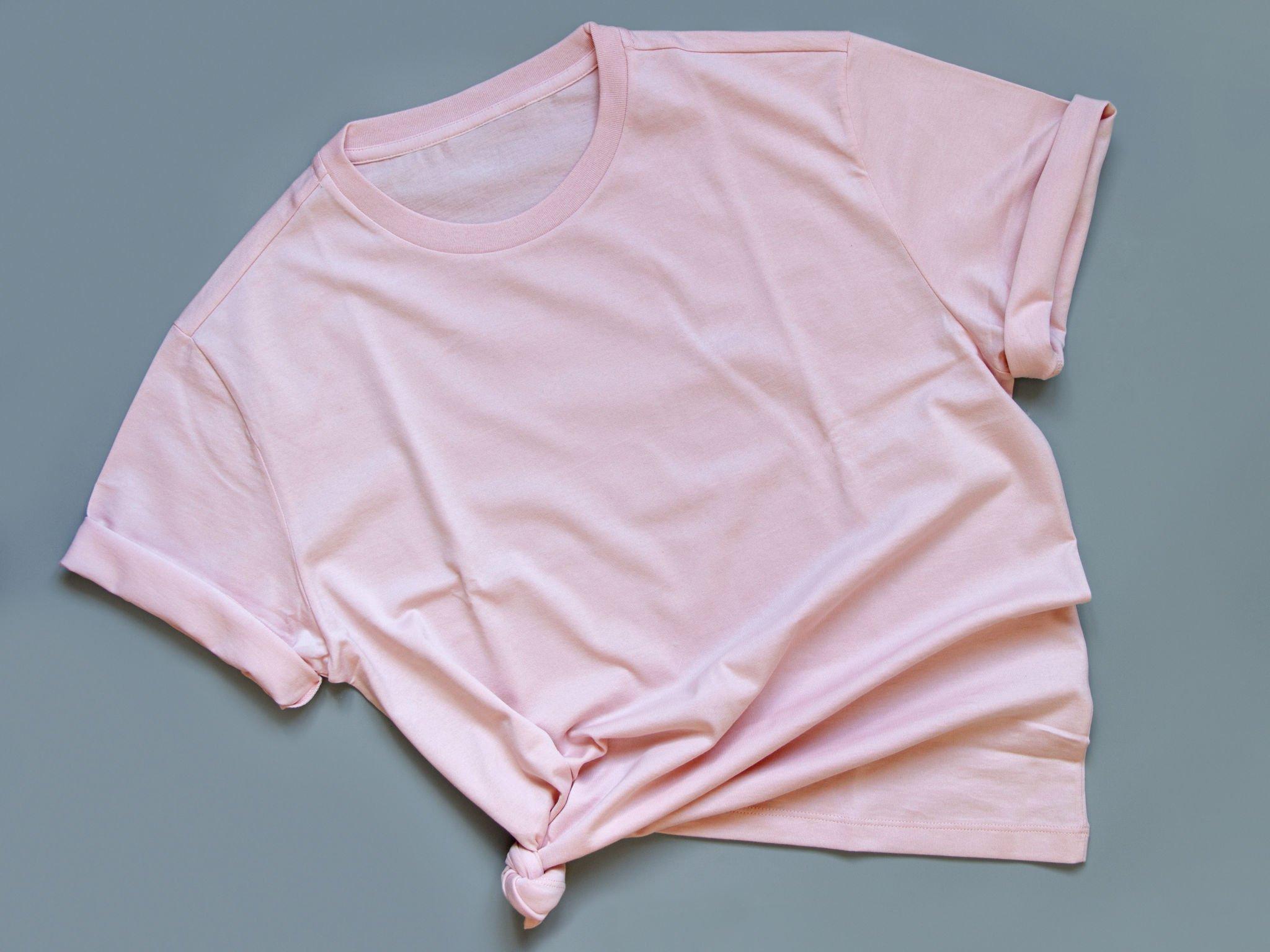T-shirts have long been a mainstay in most outfits. There is a huge variation to select from with so many different styles, design placement guides, fabrics, and textures. However, what matters more is that your decision is frequently directly influenced by the kind and caliber of the fabric.
The fit and convenience of your t-shirt are also impacted by the fabric choice. Different fabrics, such as poly, cotton, and linen, have various qualities and each serves a particular function. Therefore, your decision will usually rely on the purpose for which you plan to wear the t-shirt. While polyester is the best material for shirts and pants for gym wear, linen is the best option for warm conditions. The material of options for t-shirts is typically cotton.
This thorough guide to the best t-shirt material will help you make the best decision for your needs if you want a more in-depth look at the various t-shirt fabric choices.
Different Types Of Fabric For T-shirts

I’ve compiled a list of the top types of t-shirt fabric around the world. If you’re looking for high-quality and exquisite t-shirt material, continue reading. They are used to manufacture the best shirts.
Cotton
Cotton is used so frequently because it is affordable, breathable, and absorbent. The most well-known substance is also the most difficult in terms of how much its quality varies. As it all depends on personal preference and what you’re searching for, the term “quality” can be difficult to describe, especially when applied to t-shirts.
And there are four standard categories into which cotton shirts can be placed.
Ringspun Cotton: Ringspun cotton is strong and supple. Its manufacturing method, which involves repeatedly spinning, twisting, and thinning fibers to produce extraordinarily long, soft strands, gave rise to its moniker.
Combed Cotton: Short strands of cotton are removed, and the remaining straight fibers are then combed to create combed cotton. As a result, one of the best materials for shirts to do screen printing is produced, smooth, sturdy cloth.
Pima Cotton: The best-quality cotton that is now available is Pima cotton. Moreover, it is strong and contains extra-long fibers to guarantee suppleness. The cost of this option makes it one of the highest choices.
Organic Cotton: Pesticides and fertilizers are not used in the growing of organic cotton. It is a soft, comfy, and eco-friendly alternative, but it is more expensive than conventional cotton.

Because it is a natural, renewable resource, cotton is a popular choice. Even the most delicate skin feels wonderful on its soft, breathable surface. T-shirts made of this material are thought to be a more environmentally responsible choice, especially if you choose organic. This is because manufacturing a 100% cotton t-shirt uses fewer chemicals than manufacturing one made of synthetic materials.
Pros
- Both are machine-washable and simple to clean.
- High breathability factor, which supports optimal airflow.
- High moisture absorption; excellent for summertime use.
- For people with skin allergies or sensitivities, this is a good solution.
- The majority of cotton fabrics come from organic sources, are environmentally friendly, and are produced sustainably.
Cons
- Colors on the t-shirt usually disappear after a few washes because they can’t retain dyes for very long.
- Most cotton fabrics made with organic and sustainable materials cost a fair amount of money.
- Frequently prone to wrinkles and may lose its shape over time.
- Hot water washing may cause the clothing to shrink significantly.
- Due to the natural fibers used to make cotton fabric, if it is not handled and kept carefully, it is more likely to break and sustain damage.
Polyester
Polyester comes next on the list of the best material for t-shirts and is the complete opposite of the cotton we’ve studied so far. Polyester is a synthetic fabric created from plastic strands that have been spun and processed to produce a strong but supple yarn. To make lengthy, incredibly fine fibers, molten plastic is extruded through a plate resembling a showerhead. These fibers are subsequently spun together, heated, and stretched to give them the softness and flexibility of natural fibers.
Pros
- It is not easily wrinkled or scratched.
- Extremely strong and durable.
- Polyester is produced using strong, fine fibers, which results in a lightweight end product.
- It is a popular choice for outdoor clothing because the fabric wicks away moisture well and dries swiftly.
- Dyeing polyester fibers is a simple process.
- Its rate of elasticity is high.
Cons
- Polyester has a relatively low rate of perspiration because it is essentially a plastic material.
- Polyester is a synthetic material that poses environmental issues because it takes a long time to decompose.
- Medical emergencies could result from the fabric’s propensity to burn, melt, and fuse your skin.
- In hot and humid weather, polyester is not a suggested material to wear.
Poly-Cotton Blend
Cotton/polyester hybrid shirts are excellent because they offer all the advantages of both materials without any of the disadvantages. The best fabric for t-shirts made of 50% cotton and 50% polyester combines the softness and breathability of cotton with the durability, toughness, and moisture-wicking qualities of polyester. Cotton/poly blends come in a variety of ratios, while 50/50 blends are the most popular.
This material is a great option and works well in almost all situations. Also, it works well with screen printing, sublimation printing, and other types of personalization. T-shirts made of a cotton/poly blend are one of the most adaptable choices and may be worn all year long. Cotton and polyester blends are probably your best option if you’re looking for a t-shirt fabric that is popular worldwide.
Pros
- Extremely breathable and robust.
- It is made of comfy, soft material.
- Poly-cotton blends cost less than 100% cotton equivalents.
- Lightweight and anti-wrinkle.
Cons
- Wearing it outside is not advised because it might not hold up in extreme heat.
- Poly-cotton blends are pricey compared to polyester.
Linen
The flax plant is used to produce linen, which is woven with texture. It breathes incredibly well and is very light. It also dries rapidly and performs a wonderful job of wicking moisture from the skin, making it perfect for summer wear. Yet, because it tends to wrinkle readily, it is not one of the most widely used fabrics for t-shirts. While not always the ideal option for casual wear, linen shirts look fantastic when they are properly cared for.
Pros
- The flax plant, from which it is manufactured, gives it a very robust construction.
- This fabric is made to last.
- Has a difficult time stretching.
- It’s made of a biodegradable material.
- It is hypoallergenic because there are no chemicals used in the manufacture of linen.
Cons
- Rapid creases and wrinkling are a tendency.
- Linen can stop being biodegradable after being bleached and dyed.
- Ironing clothes made of linen can be a real hassle.
Rayon
A popular synthetic textile for athletic apparel is rayon. It is a smooth, airy fabric with an attractive drape that is made from cotton, plants, and trees. It absorbs moisture well and readily accepts color. Yet, because it wrinkles readily, it isn’t as popular as polyester. In comparison to many of the other fabrics on this list, it also tends to degrade more quickly.
Nonetheless, this material is one of the ingredients in tri-blend shirts, which typically contain 50% polyester, 25% cotton, and 25% rayon, though specific ratios might vary. The softness of tri-blend shirts makes them ideal for printing for business t-shirt design ideas. Be aware that they typically lack the other materials’ solid coloring and instead have a mottled look.
Pros
- Feels quite silky and luscious.
- Alternative for t-shirts that is less expensive than other materials.
- Possesses a high level of breathability.
- Excellent color retention and ease of dyeing.
Cons
- The best method of cleaning rayon clothing is dry cleaning to preserve its integrity.
- It should be avoided since rayon production harms the environment.
- Easy to wrinkle.
- Unlike other fabrics, not as resilient.
Lycra
Spandex frequently contains lycra, an elastic fiber type. Before it can be used as t-shirt fabric, lycra must undergo a variety of processes. These procedures involve pulling out filaments, extruding into a solution, wet-spinning to create fine fibers, calendaring, and drying.
It is one of the most elastic materials, which makes it a desirable choice for athletic clothing because it provides more movement. It is a material with excellent strength and durability and moisture-wicking capabilities.
Pros
- It is easily stretched in every direction.
- It can wick away moisture.
- Very comfy and frequently used to make yoga trousers.
- It is very robust.
Cons
- It adheres to your body and reacts to heat.
- Since it’s made of synthetic materials, it’s not the best for the environment.
- When it clings to the body, it may feel limiting.
A Few More Fabric Terms For T-shirts

I wanted to include a few more fabric-related terminology that you could encounter now that the guide is almost finished. These all give you a little more information about the various possibilities you might be considering, whether you see them in product names or more thorough descriptions.
Heather: A fabric weave created by combining two yarns of drastically different colors to give the appearance of a speckled texture. Usually, this is manufactured by mixing two different yarn types, such as cotton and polyester, which take color in various ways and provide this look.
Rib-knit: Another fabric weave known as rib knit is frequently used for collars and sleeve cuffs due to its elastic properties. It is constructed of alternating rows of two distinct weaves that can be organized in a pattern known as baby rib knit or in various configurations such as 2×2, 3×1, etc.
Fleece: Fleece is often a polyester fabric that has been woven and then napped, which teases out the knitted loops and produces a thicker, softer, fuzzy side. All different types of t-shirt prints, hoodies, sweatshirts, sweatpants, etc. are made using it.
French terry: French terry is a knit fabric having loops that are wider and fluffier on the inside face than jersey knit. It is typically made of a mid-weight fabric, which is thicker and warmer than a t-shirt but still thinner than cold-weather sweatshirts.
Slub: A fabric that has thicker and thinner patches that are the consequence of knitting yarn in different thicknesses. Slubs, an interesting byproduct of yarn production, were initially thought to be just mistaken until someone realized they had a fascinating effect when woven into fabric.

What To Check For Before Purchasing T-shirt Cloth?
Knowing the distinctions between cotton t-shirt materials and t-shirt material mixes is crucial when purchasing t-shirts. The t-shirt material blend you choose will rely on how you plan to wear it and the features you require in a t-shirt.
Comfortability
Most people have a favorite sort of t-shirt material. Some people prefer a polyester blend, while others prefer cotton or other natural fabrics because they feel better and are more comfortable.
Affordability
For instance, t-shirts made from mixes of t-shirt materials like cotton, polyester, and rayon are less expensive than t-shirts made from silk or other expensive t-shirt materials.
The top t-shirts should be inexpensive and offered in a variety of forms, sizes, and styles that suit your requirements or tastes. There is a t-shirt designed for you whether you prefer tight tunic t-shirts that require the tightest fitting or crew neck t-shirts. T-shirts are typically worn by people of all genders and sizes.
Durability
T-shirts made from mixes of t-shirt materials, such as cotton t-shirts, organic cotton t-shirts, and recycled t-shirts, are also more environmentally friendly than t-shirts made from polyester t-shirts or other heavily processed t-shirt materials.
The best material for shirts ought to be cozy enough to wear for extended periods, permeable enough to keep you cool in temps that can reach 90°F (32°C), and durable enough to withstand abuse like towel drying or wearing to bed.
Cost
As each fabric has a varied price range, another factor to consider is finding a T-shirt that fits your spending requirements.

FAQs
Which Material Makes The Finest Non-shrinking T-shirts?
Regardless of the extreme wash and dry cycle, you subject polyester to, it never loses its form and rarely shrinks or stretches.
What Type Of Fabric Makes A T-shirt Ideal For Hot Weather?
On many synthetic clothing items, like polyester and nylon, you’ll see “moisture management” or “wicking”, but merino wool and cotton can also be good choices.
What Kind Of T-shirt Fabric Is Feeling Cool To Wear?
Polyester is a synthetic fabric that is most frequently used for apparel that wicks away moisture. It is made of synthetic material, which is lightweight, affordable, and durable.
Final Words
It’s simple to believe that every type of fabric for t-shirts is essentially the same, but that isn’t the reality. They can be created from a variety of materials and are available in an infinite number of styles, sizes, and colors. In actuality, they may be constructed from just about any kind of material. Nonetheless, the most typical are the ones that are listed in this blog.
How to start a t-shirt business? Considering your precise demands is a crucial first step in making sure you buy the correct blank t-shirts if you’re looking to buy some for yourself, a t-shirt manufacturer, or an organization. Before shopping, take the time to carefully read the information above about the best materials for t-shirts to make sure the shirts you eventually choose will be ideal for your requirements.







